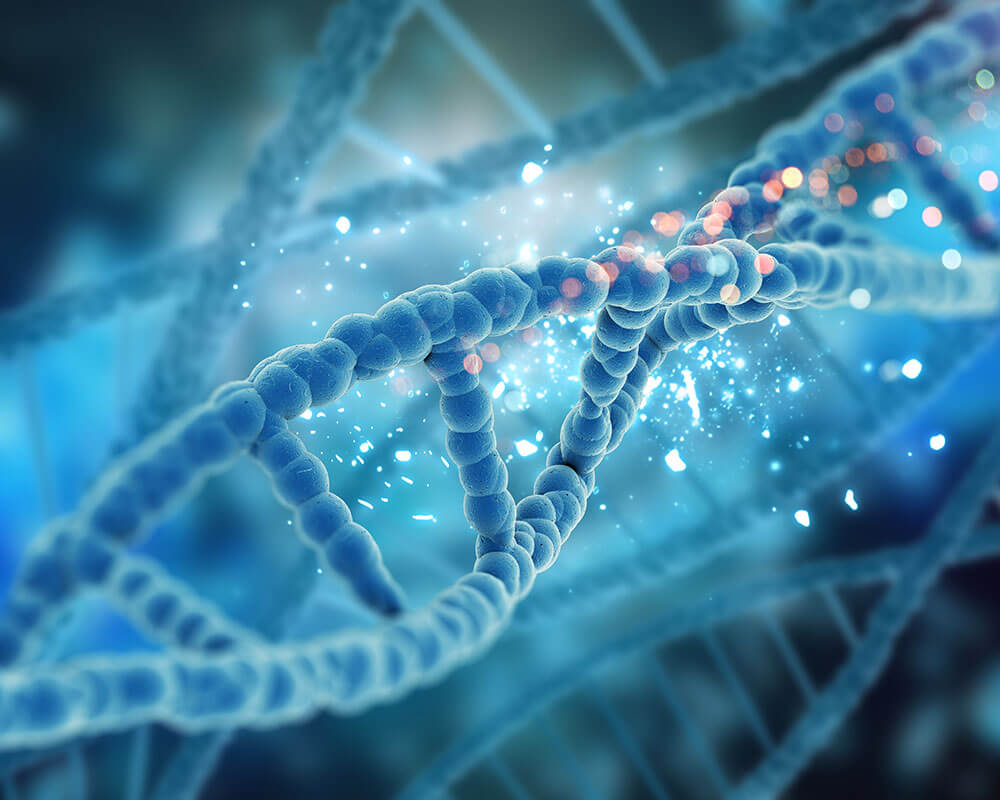
Decoding the Genetic Jigsaw: Unveiling the Link Between Genetics and Obesity
Obesity has become a global health concern, affecting millions of people worldwide. While lifestyle choices, such as poor diet and sedentary behavior, play a significant role in the development of obesity, emerging research has shed light on the influence of genetics in this complex condition. Understanding the interplay between genetic factors and environmental influences is crucial for comprehending the underlying mechanisms of obesity and devising effective strategies for prevention and treatment. This article delves into the role of genetics in obesity, highlighting the latest discoveries and their implications.
Table of Contents
ToggleGenetic Predisposition:
Scientific studies have consistently demonstrated that genetics contribute significantly to the risk of developing obesity. Twin and family studies have provided compelling evidence by showing higher concordance rates for obesity among genetically related individuals compared to unrelated individuals. It is estimated that genetic factors account for approximately 40-70% of the variability in body weight and fat distribution.
Obesity-Associated Genes:
Researchers have identified numerous genes associated with obesity, each playing a unique role in the regulation of appetite, energy expenditure, fat metabolism, and adipose tissue development. One of the most extensively studied genes is the FTO gene, which has been linked to increased food intake and a higher risk of obesity. Other genes involved in obesity include MC4R, POMC, and LEP, which are associated with appetite regulation, and ADIPOQ and PPARG, which are involved in adipocyte differentiation and metabolism.
Gene-Environment Interactions:
While genetic factors alone cannot fully explain the obesity epidemic, their impact is modulated by environmental influences. Gene-environment interactions play a crucial role in determining an individual’s susceptibility to obesity. For instance, a person with a genetic predisposition to obesity may be more likely to develop the condition when exposed to an obesogenic environment characterized by a high-calorie diet and physical inactivity. Conversely, individuals with a genetic advantage in energy metabolism may be more resistant to weight gain even in an unfavorable environment.
Implications for Obesity Management:
Recognizing the role of genetics in obesity has significant implications for the management and prevention of this multifactorial condition. Genetic testing and personalized medicine approaches can help identify individuals at higher risk and tailor interventions accordingly. Moreover, the knowledge of obesity-associated genes may contribute to the development of novel pharmacological interventions that target specific genetic pathways involved in energy balance and metabolism. Accordingly, we must know about the role of genetics in the following issues:
The Role of DNA in the obesity epidemic
The role of DNA in the obesity epidemic is complex and multifaceted. While it is important to acknowledge that genetic factors alone cannot account for the entire obesity epidemic, they do play a significant role in shaping an individual’s susceptibility to obesity. Here are some key aspects of the role of DNA in the obesity epidemic:
Genetic Predisposition:
Genetic variations can influence an individual’s predisposition to obesity. Certain genes involved in appetite regulation, energy metabolism, fat storage, and other physiological processes can contribute to an increased risk of obesity. These genetic variations can affect factors such as hunger and satiety signals, metabolism, and the efficiency of storing and utilizing energy.
Family and Twin Studies:
Studies involving families and twins have provided substantial evidence for the heritability of obesity. Twin studies, which compare the similarities between identical twins (who share 100% of their genetic material) and fraternal twins (who share approximately 50% of their genetic material), consistently show a higher concordance rate for obesity among identical twins. Family studies also indicate that individuals with a family history of obesity have an increased risk of developing the condition.
Obesity-Associated Genes:
Researchers have identified several genes that are associated with obesity. For example, the FTO gene (fat mass and obesity-associated gene) has been extensively studied and linked to an increased risk of obesity. Other genes, such as MC4R, POMC, LEP, ADIPOQ, and PPARG, are also implicated in various aspects of appetite regulation, metabolism, and adipose tissue development.
Gene-Environment Interactions:
The interplay between genetic factors and environmental influences is crucial in understanding the obesity epidemic. Genetic predisposition interacts with the environment, including lifestyle factors, socioeconomic factors, and the obesogenic environment, to influence an individual’s risk of obesity. In an unfavorable environment characterized by high-calorie diets, sedentary behavior, and other obesogenic factors, individuals with a genetic predisposition may be more susceptible to developing obesity.
Epigenetics:
Epigenetic modifications, which involve changes in gene expression without altering the DNA sequence, contribute to the understanding of how genetic factors interact with the environment in obesity. Epigenetic changes can be influenced by factors such as diet, physical activity, stress, and environmental toxins, and they can affect gene expression patterns and metabolic processes, potentially increasing the risk of obesity.
It is important to note that the obesity epidemic is a complex issue influenced by a combination of genetic, environmental, and behavioral factors. Genetic factors do not act in isolation but interact with environmental influences to shape an individual’s risk. Lifestyle choices, such as diet and physical activity, remain critical factors in the prevention and management of obesity, even for individuals with a genetic predisposition. Understanding the role of DNA in the obesity epidemic provides insights into the underlying mechanisms and can contribute to the development of targeted interventions and personalized approaches to combat this global health challenge.
The role that genetics plays in weight loss
Genetics also plays a role in weight loss, as it influences an individual’s response to various weight loss interventions and strategies. Here are some key aspects of the role of genetics in weight loss:
Baseline Metabolic Rate:
Genetics can influence an individual’s resting metabolic rate (RMR), which is the number of calories burned at rest. Some individuals have a naturally higher RMR, which means they burn more calories even when inactive. Others may have a lower RMR, making it more challenging for them to lose weight. These differences in metabolic rate can be attributed, at least in part, to genetic factors.
Fat Storage and Distribution:
Genetics also affect how and where the body stores fat. Some individuals have a genetic predisposition to store excess fat in certain areas, such as the abdomen, while others may store fat more evenly throughout the body. Fat distribution patterns can impact weight loss efforts, as certain areas, like abdominal fat, can be more resistant to weight loss.
Appetite and Satiety Regulation:
Genetic variations can influence an individual’s appetite, hunger signals, and satiety (feeling of fullness) response. Some individuals may have genetic variants that increase their appetite or reduce their satiety, making it more challenging for them to control their food intake and achieve weight loss. These genetic differences can affect the regulation of hormones involved in appetites, such as leptin and ghrelin.
Nutrient Processing and Food Preferences:
Genetic factors can also influence how individuals process and respond to certain nutrients, such as carbohydrates and fats. Some individuals may have genetic variations that affect their ability to metabolize specific nutrients efficiently, leading to differences in weight loss outcomes. Additionally, genetics can impact food preferences, taste perception, and cravings, which can influence dietary choices and adherence to weight loss plans.
Behavioral and Psychological Factors:
While genetics may not directly determine an individual’s behavior or psychological traits, certain genetic variations can influence personality traits, motivation, and stress response. These factors can indirectly affect weight loss efforts, as they can impact an individual’s adherence to dietary and exercise regimens.
Conclusion
It is important to note that while genetics may influence weight loss outcomes, they do not solely dictate an individual’s ability to lose weight. Weight loss success is a complex interplay between genetic factors, lifestyle choices, environmental influences, and psychological factors. Lifestyle modifications, such as adopting a balanced diet, regular physical activity, and behavior changes, remain crucial for successful weight loss, regardless of genetic predisposition. Understanding the role of genetics in weight loss can help personalize interventions and optimize strategies based on an individual’s genetic profile. Genetic testing and personalized approaches can provide insights into an individual’s metabolic characteristics, dietary needs, and optimal exercise routines, leading to more targeted and effective weight loss strategies. However, it is essential to recognize that genetics is just one piece of the puzzle, and comprehensive weight management should consider a holistic approach that addresses multiple factors contributing to weight loss and overall well-being.
